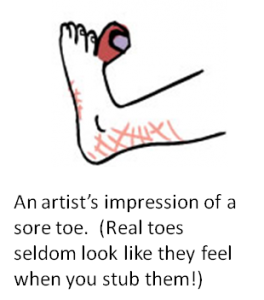What’s in the box?
Science and scientific evidence
Watch the video below, ‘What’s in the box?’ then read on.
Were you able to work out what was in the box from the sounds? The ideas you suggested were not based on pure guesswork, were they? They were based on the evidence available to you.

Suppose you are now given another box but this time, the box is sealed. You shake it and it rattles. It sounds a bit like a couple of metal spoons, but then again, perhaps it’s three spoons … or a fork and spoon. Is there a way to know which theory is right? Suppose you’re now given access to an X-ray machine. Does that help?
Suppose you X-rayed the box and saw nothing inside but the box rattled when you shook it, what would that tell you?
Conclusive evidence
Sometimes, when you’re investigating different possibilities, the evidence for one theory or another becomes overwhelming and everyone agrees on the proper conclusion.
In science, this often seems to be the way it works (at least until someone comes up with a better theory or some surprising new evidence!). Mind you, there is a reason for this. Science is a particularly good way to share and test theories. Here’s why. Ideas in science are ideas about how the natural world works. Those ideas must be supported by scientific evidence – which is evidence that can be detected using the senses or sensors. The evidence must be objective which means that other scientists must be able to see it (provided they have the right equipment).

Suppose in contrast you stub your toe and begin to hop around the room, yelling in agony. “Oi!” says your unsympathetic friend, “Stop making a fuss about nothing.” In this case, your idea that your toe is now in agony is supported by evidence which is subjective. The pain signals from your toe are felt only by you, which makes it very difficult to persuade someone else how much it hurts.
Over-excited Fruit captured on Video
Here is another example of the type of question that you can explore scientifically. Can you explain why the raisins dance? Play the video and then see what ideas you can come up with. Remember, your ideas need to be supported by observations which someone else, if they set up this experiment, would be able to see too!
How does your answer compare with ours? Here’s what we think …
If you watch each raisin carefully when it gets to the surface, you’ll see that it twists over before sinking. It’s almost as if the raisin is resting on a float which flips it over …
So now we can explain what’s happening. As the raisins fall, they become covered in bubbles. The bubbles are carbon dioxide gas which is what gives the lemonade its fizz. The bubbles form and cluster onto the raisins and carry them to the surface. But once a raisin reaches the surface, the bubbles can escape. The raisin is flipped over becasue of the bubbles that are still on its underside. Now the last of the bubbles escape and the raisin falls! Is that what you said too?
Looking for a higher level explanation?
For more about How Science Works, but at a higher level, you might like the ideas on this page.